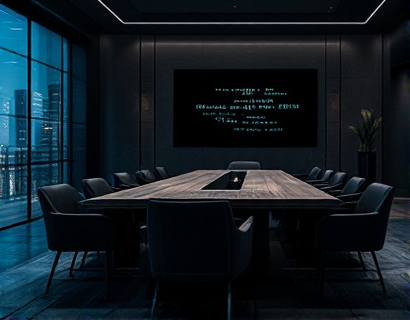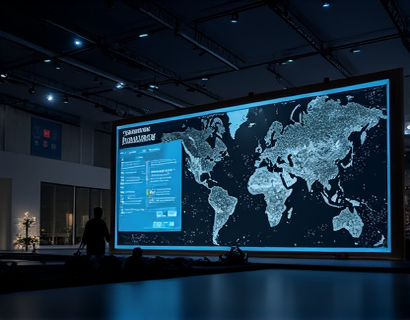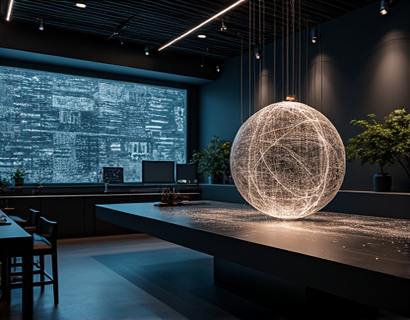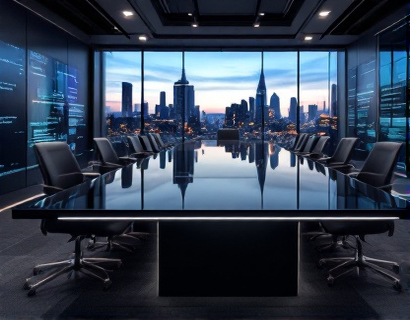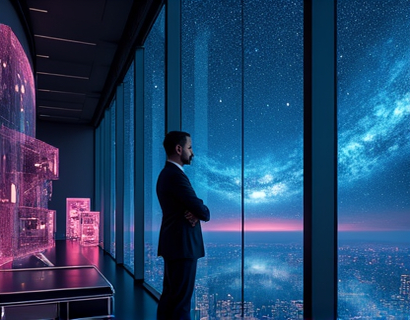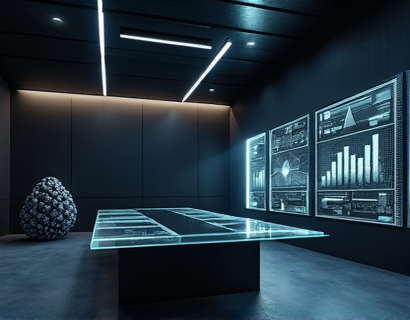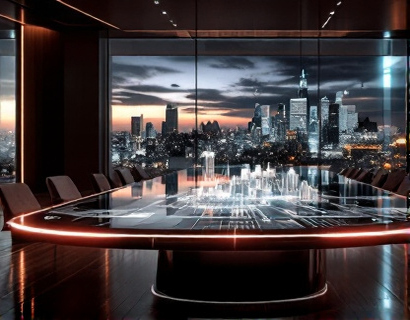Transforming Daily Life with Augmented Reality E-Commerce
The integration of augmented reality (AR) into e-commerce is revolutionizing the way we shop and interact with products online. This technology, once confined to the realms of gaming and entertainment, is now becoming a pivotal tool in enhancing the online shopping experience. By overlaying digital information onto the physical world, AR enables consumers to visualize products in their own environment before making a purchase, thereby bridging the gap between the virtual and real worlds.
Understanding Augmented Reality in E-Commerce
Augmented reality in e-commerce refers to the use of AR technology to create immersive and interactive shopping experiences. This can include virtual try-ons, 3D product visualizations, and interactive product demonstrations. The core idea is to provide customers with a more engaging and informative shopping journey, allowing them to make more informed decisions.
One of the primary benefits of AR in e-commerce is the reduction of return rates. By enabling customers to see how a product would look or fit in their home or on their person, AR helps to minimize the uncertainty and risk associated with online purchases. This not only enhances customer satisfaction but also reduces the financial burden on retailers due to returns and exchanges.
Enhancing Product Visualization
One of the most compelling applications of AR in e-commerce is product visualization. Traditional product images and videos can sometimes fall short in conveying the true appearance and functionality of a product. AR technology, however, allows customers to see products in a more lifelike manner.
For instance, furniture retailers can use AR to let customers place virtual furniture in their living rooms. This feature not only helps customers visualize how the furniture will fit and look in their space but also encourages them to explore a wider range of products. Similarly, fashion brands can offer virtual try-on capabilities, allowing customers to see how clothes and accessories would look without the need for physical try-ons.
Case Study: Furniture Retail
A leading furniture retailer implemented an AR feature that enables users to see how furniture would look in their home before purchasing. The result was a significant increase in customer engagement and a notable reduction in return rates. Customers appreciated the ability to visualize the furniture in their actual living spaces, leading to more confident purchasing decisions.
Personalization and Customization
AR also opens up new possibilities for personalization and customization in e-commerce. Consumers can use AR to customize products to their liking, from changing colors and materials to adjusting sizes and designs. This level of customization not only enhances the shopping experience but also increases customer loyalty and satisfaction.
For example, a cosmetics brand can use AR to allow customers to try on different makeup looks and products virtually. Users can experiment with various shades and styles, receiving real-time feedback on how the products would look on their skin. This personalized approach not only boosts customer confidence but also drives sales by encouraging customers to purchase additional products to complete their look.
Customizable Home Decor
In the home decor sector, AR can be used to create customizable interior design experiences. Customers can select from a variety of furniture, wall art, and accessories, and see how they would look in their home. Some platforms even allow users to mix and match different items to create a cohesive and personalized space. This level of interactivity and personalization can significantly enhance the shopping experience and lead to higher conversion rates.
Interactive Product Demonstrations
Another key application of AR in e-commerce is interactive product demonstrations. This feature is particularly useful for complex or high-tech products where understanding the features and benefits is crucial for making a purchase decision.
For example, electronics retailers can use AR to provide step-by-step assembly instructions or demonstrate the functionality of a new gadget. Customers can follow along with the AR guide, gaining a deeper understanding of the product and its capabilities. This not only educates the customer but also builds trust and confidence in the product.
Virtual Product Tours
A car manufacturer implemented an AR feature that allows customers to take a virtual tour of a new vehicle model. Users can explore the car's interior and exterior, interact with various features, and even simulate a test drive. This immersive experience provides a comprehensive view of the product, helping customers make informed decisions and increasing the likelihood of a purchase.
Enhancing Customer Engagement
AR not only improves the shopping experience but also enhances customer engagement. Interactive and immersive features keep customers engaged for longer periods, increasing the chances of conversion. Moreover, AR can be used to create gamified experiences, such as scavenger hunts or interactive challenges, which can further boost customer interaction and brand loyalty.
A fashion brand, for instance, launched an AR-based scavenger hunt where customers could find virtual items hidden across the store. Each item found unlocked exclusive discounts and rewards, encouraging customers to explore the store and engage with the brand in a fun and interactive way.
Social Sharing and Community Building
AR experiences can also be designed to be shareable, fostering a sense of community among customers. When customers can share their AR experiences on social media, it not only extends the brand's reach but also creates user-generated content that can serve as social proof.
A beauty brand created an AR filter that allowed users to apply virtual makeup and share their looks on social media. The filter became a viral sensation, with users creating and sharing unique makeup tutorials and looks. This not only increased brand visibility but also built a community of engaged and enthusiastic customers.
Challenges and Considerations
While the benefits of AR in e-commerce are significant, there are also challenges and considerations that retailers must address. One of the primary challenges is ensuring a seamless and user-friendly AR experience. Technical issues, such as lag or poor accuracy, can frustrate customers and detract from the overall experience.
To overcome these challenges, retailers should invest in high-quality AR technology and conduct thorough testing to ensure a smooth user experience. Additionally, compatibility with various devices and platforms is crucial to reach a broader audience.
Data Privacy and Security
Another important consideration is data privacy and security. AR experiences often require access to user data, such as camera and location information. Retailers must prioritize data protection and transparency, clearly communicating how user data is collected, used, and stored.
Implementing robust security measures and adhering to data protection regulations can help build trust with customers and mitigate potential risks.
Future Trends in AR E-Commerce
The integration of AR in e-commerce is still in its early stages, and there are numerous exciting trends and developments on the horizon. One such trend is the use of AR in augmented shopping assistants, which can provide personalized recommendations and guidance throughout the shopping process.
These virtual assistants can analyze customer preferences and past purchases to suggest products that align with their interests. They can also offer real-time assistance, answering questions and providing detailed product information, further enhancing the shopping experience.
Integration with Other Technologies
Another trend is the integration of AR with other emerging technologies, such as artificial intelligence (AI) and the Internet of Things (IoT). AI can enhance AR experiences by providing more accurate and personalized recommendations, while IoT devices can enable more interactive and context-aware AR applications.
For example, a smart home system can integrate with AR to allow customers to see how smart devices would look and function in their home. This holistic approach can streamline the purchasing process and provide a more comprehensive view of the product's value.
Conclusion
The integration of augmented reality in e-commerce is transforming the way we shop online. By providing immersive, interactive, and personalized experiences, AR is not only enhancing customer satisfaction but also driving business growth. As technology continues to advance, the potential for AR in e-commerce is vast, offering endless opportunities for innovation and improvement.
Retailers who embrace AR and invest in creating seamless and engaging experiences will be well-positioned to lead the future of online shopping. For consumers, this means a more enjoyable, informative, and confident shopping journey, ultimately leading to a better lifestyle enriched by cutting-edge products and technologies.



